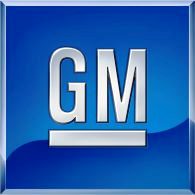General Motors has taken another big step towards correcting one of its last big financial headaches, contributing 60.6 million shares of common stock into its chronically underfunded pension program.
Worth over $2 billion, the stock has been added onto a $4 billion cash contribution the automaker made last month. Nonetheless, that still leaves $21.4 billion more that GM must ultimately come up with the cover its pension liabilities.
Immediately prior to the cash contribution, the maker owed $17.1 billion to its U.S. salaried and hourly workers’ pension programs and another $10.1 billion to its various overseas programs.
Those figures actually might shrink on their own. They reflect the decline in value of various assets in the pension program portfolios that were slammed by the recession. As those assets regain some of their value the shortfall could shrink substantially.
GM’s pension funds were kept intact as the maker moved through the bankruptcy process, and with billions of dollars in other debts wiped out, the programs are the largest single deficit on the maker’s books.
Loans from the federal treasury were paid off in 2010 and the only remaining debt to U.S. (and Canadian) taxpayers will come when the maker sells off the remaining government stake in the company. Much of the government’s holdings were eliminated during the record $23 billion GM IPO that was held last November.
Closing the pension gap is a critical for the company’s restructuring, according to CEO Dan Akerson, who declared, this week, “We don’t want debt on our balance sheet.”
Having a lean, debt-free operation is critical to ensure that GM “can sustain itself during the next down cycle” in the economy, said Akerson.
Clearing out its debt was only part of the challenge for the maker, whose bloated cost structure made it possible only to make money during the peak of the normal business cycle, noted the General Motors chief executive. But it is nonetheless a critical part of staying on the path laid out by the court-approved bankruptcy reorganization.
And it is paying off. For the first three quarters of 2010, GM reported $4.2 billion in earnings, and it is expected to remain in the black – albeit with a smaller profit – when it reports its fourth-quarter numbers in the coming weeks.
The reduced debt load was a critical selling point for Akerson and other GM executives when they began fanning out before the IPO to win over still-skeptical investors. Ultimately, the market accepted a higher-than-anticipated $33-a-share price for the initial public offering. Since then, GM’s stock has risen sharply, closing Thursday at $38.27 a share.
But Wall Street analysts have given the stock a thumbs up and are forecasting it could rise as high as $50 a share.


As a GM retiree I am glad to read story about GM doing better and putting money into its pension fund. We came so lose to losing everything. Thank God that Obama won in 2008 or there would have been 1 million more America’s in the auto industry that would have been out of work.
It’s interesting to see how the nasty chatter has largely subsided as GM continues to show strong signs of improvement — and the largely conservative big-dollar investors stand to make significant money on its turnaround. Oh, and so I am quote clear about this, I am not referring to those who had a legitimate debate about a bailout, which deserved just such an extensive debate, but those who saw a political opportunity that would have sacrificed GM and risked the country, to damage the current president. The screams for boycotts by the likes of Limbaugh are a good example of politics and theater over reason or even reasoned debate.
Paul A. Eisenstein
Publisher, TheDetroitBureau.com